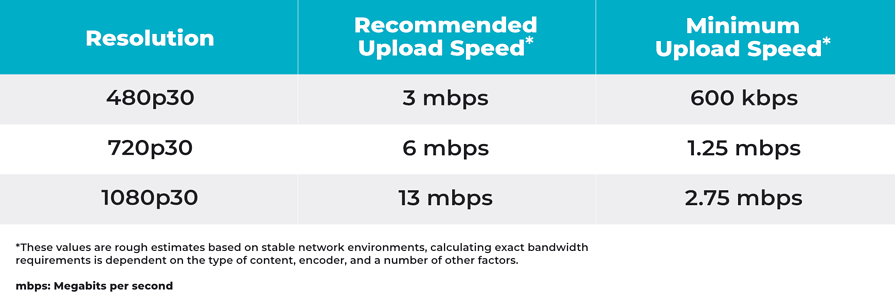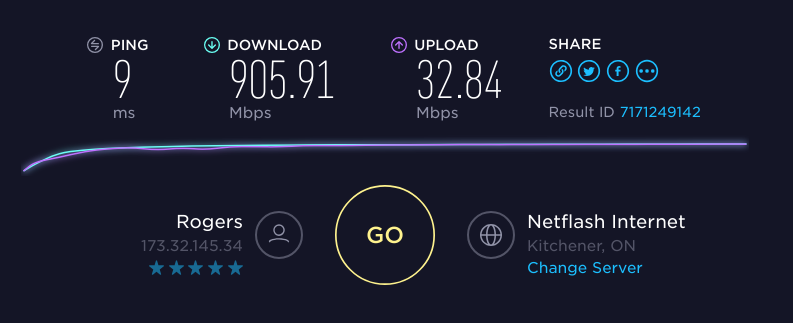Exactly how to Pick the Right Internet Plan Based on Megabits Per Second
Exactly how to Pick the Right Internet Plan Based on Megabits Per Second
Blog Article
Exactly How Megabits Per Second Influence Your Online Activities
The idea of megabits per second (Mbps) plays a pivotal role in forming our on the internet experiences. Greater Mbps can improve efficiency and minimize disruptions, while inadequate rates might cultivate aggravation and inefficiency.
Understanding Megabits Per Second
When considering net rate, it's vital to comprehend the principle of megabits per second (Mbps), which acts as a standard dimension for data transfer prices. This metric measures just how much information can be transferred over a net connection in one second, providing a clear understanding of performance capabilities - Megabits Per Second. For context, one megabit amounts to one million bits, and Mbps is generally used to express data transfer for various on-line tasks
A higher Mbps indicates a faster internet connection, making it possible for customers to perform tasks such as downloading and install files, searching sites, and participating in on the internet pc gaming more efficiently. Common surfing requires around 1-5 Mbps, while streaming high-definition video may demand 5-25 Mbps. Recognizing these requirements is crucial for figuring out the appropriate internet speed needed for certain tasks.
Furthermore, the number of devices attached to a network can impact total performance. Several users streaming, video gaming, or downloading and install concurrently can stress readily available data transfer, resulting in slower rates - Megabits Per Second. Reviewing individual online routines and requirements is vital in selecting a web strategy that straightens with one's needs, ensuring a smooth electronic experience
Streaming and Buffering Issues
Streaming high-definition content has actually ended up being a staple of contemporary online entertainment, yet it is usually accompanied by frustrating buffering concerns. These interruptions can dramatically detract from the seeing experience, causing discontentment and possible loss of target market involvement. Buffering occurs when the information sent from the streaming service is not received swiftly enough to maintain a smooth playback, often due to inadequate web rate gauged in megabits per second (Mbps)

In addition, real-time streaming can be affected by network congestion, which happens when multiple tools share the very same transmission capacity. As a result, optimizing link rate and making sure sufficient Mbps is essential for a smooth streaming experience. As streaming solutions proceed to advance, recognizing the impact of Mbps on buffering concerns continues to be crucial for customers looking for uninterrupted enjoyment.
Online Video Gaming Performance
The impact of internet speed on on-line tasks extends beyond streaming, dramatically affecting on-line gaming efficiency. In competitive video gaming, low latency and high transmission capacity are critical for a smooth experience. A rapid connection decreases lag, allowing gamers to react promptly to in-game events, which can be the difference between triumph and loss.
Transmission capacity, gauged in megabits per second (Mbps), plays an important role in supporting several devices browse around here and pc gaming platforms concurrently. Inadequate transmission capacity can cause went down links or reduced video game top quality, negatively impacting gameplay. As an example, on-line multiplayer video games require significant information transfer, particularly during peak video gaming hours when countless players are online.
Fast-paced first-person shooters require higher rates to preserve responsiveness, while turn-based technique games might function moderately well on reduced speeds. As on the internet pc gaming continues to develop, with enhancing graphical integrity and even more complicated multiplayer environments, the need for greater Mbps will just increase.
Video Clip Conferencing Top Quality
In today's digital landscape, video conferencing top quality is greatly affected by internet rate, specifically in terms of transmission capacity and latency. High-quality video calls require sufficient data transfer to transfer sound and video data seamlessly. Usually, a minimum of 1.5 Mbps upload and download rates is recommended for conventional interpretation video clip, while high-def video clip conferencing generally requires at least 3 Mbps.
Latency, or the hold-up between sending out and getting data, additionally plays a crucial duty in the user experience. Greater latency can lead to echo, lag, and disjointed interactions, which can prevent collaboration and interaction throughout conferences.
Additionally, multiple individuals in a video clip conference can strain offered transmission capacity, requiring even higher rates. Network blockage, frequently brought on you can try these out by synchronised activities like streaming or downloading, can further deteriorate video top quality. Thus, for organizations depending on video conferencing for remote partnership, understanding the connection in between megabits per overall and second communication quality is important for maintaining performance and improving online interactions.
Picking the Right Internet Plan
Selecting an appropriate internet plan is crucial for making sure optimal performance in numerous online tasks, especially in setups that require high bandwidth, such as video conferencing and online gaming. Megabits Per Second. When taking into consideration a web strategy, it is vital to examine both the rate and data allocation to match your certain use demands
For families with several customers taking part in simultaneous tasks, a strategy supplying higher megabits per second (Mbps) is suggested. Generally, a minimum of 25 Mbps appropriates for standard streaming and browsing, while strategies surpassing 100 Mbps are more effective for more intensive tasks. Additionally, think about the nature of your online tasks; video clip conferencing needs at the very least 1.5 Mbps upload rate, while online gaming may need a reduced latency but consistent link.
Unrestricted information plans can avoid throttling and disturbances, particularly if heavy usage is prepared for. By attentively picking an internet plan tailored to your demands, you can boost your on the internet experience, ensuring smooth, nonstop access to your recommended activities.
Conclusion
In verdict, the value of megabits per second (Mbps) in forming on the internet activities can not be overstated. Higher Mbps assists in smooth streaming, minimizes buffering, improves pc gaming experiences, and ensures top notch video clip conferencing. Alternatively, inadequate bandwidth can result in frustrating interruptions and decreased efficiency across different tasks. A complete understanding of specific or family Mbps requirements is important for choosing a suitable web plan that effectively sustains varied online More about the author activities and user demands.

Typically, a minimum of 25 Mbps is ideal for common streaming and surfing, while plans going beyond 100 Mbps are preferable for even more intensive jobs. In addition, consider the nature of your online activities; video conferencing requires at the very least 1.5 Mbps upload rate, while online gaming may require a reduced latency yet consistent link.
Report this page